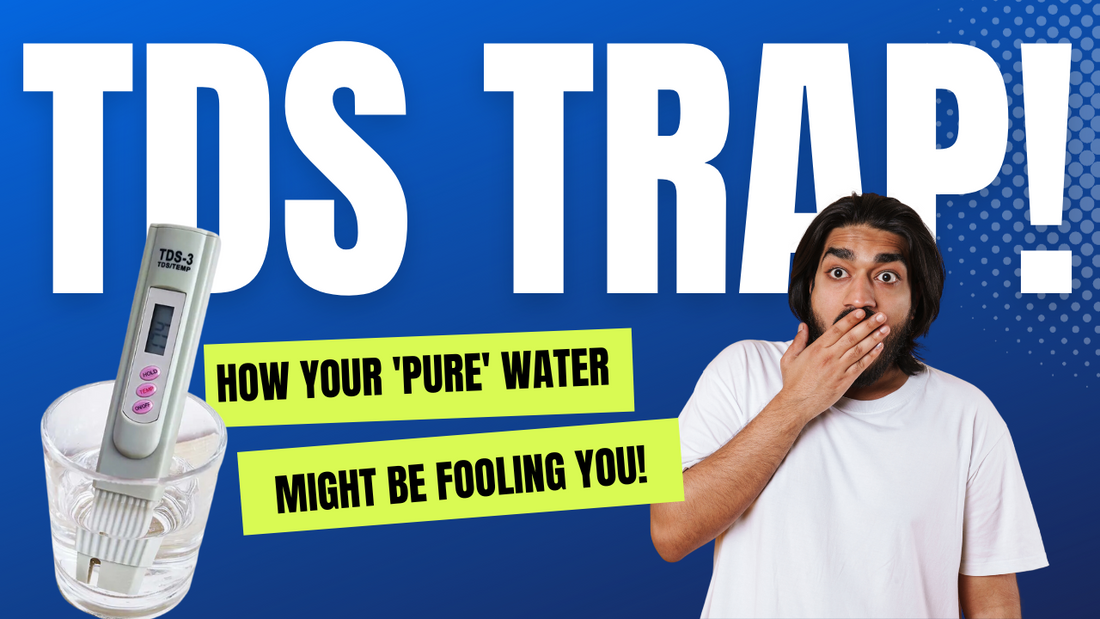In today's world, access to clean and healthy drinking water is paramount. Whether you rely on municipal supply, borewell water, or other sources, understanding the quality of water is crucial. One key indicator of water quality is Total Dissolved Solids (TDS). Understanding the TDS in water purifiers is the key to choosing the right water purifier and ensuring you're filling your glass with the healthiest water possible.
So, let's delve into the fascinating world of TDS (well, we are trying to make it fascinating) and empower you to make informed choices for your well-being!
Introduction: The Significance of TDS in Water Purification
TDS refers to the total amount of dissolved substances in water, including minerals, salts, metals, and other impurities. It is an important parameter to consider because it gives us an indication of the overall quality of the water. By measuring the TDS level, we can determine the presence of harmful contaminants and assess the effectiveness of a water purifier in removing them. Understanding the TDS level in water is crucial for ensuring that the water we consume is safe and healthy.
How TDS Affects Water Quality
TDS levels in a water purifier significantly influence water's taste, odor, and the overall quality. Water with very low TDS (below 50 ppm) may taste bland, but the bigger concern might be a lack of essential minerals crucial for our body's functions. Long-term intake of low TDS levels in water can increase the risk of tooth decay, bone erosion, and even some cardiovascular problems.
On the other hand, high TDS (above 500 ppm) can make water unpalatable with a salty or metallic taste, and in some cases, it can also indicate the presence of harmful contaminants like lead or arsenic that pose serious health risks. To achieve a balance between pleasant taste and safe drinking, the World Health Organization (WHO) recommends an ideal TDS range of 100-300 ppm for healthy hydration.
Finding Your Perfect Fit: Choosing the Right Water Purifier Based on TDS
When it comes to choosing a water purifier, understanding the TDS levels of your water source is essential. Different types of water purifiers are designed to address different TDS levels, and choosing the right one can make a significant difference in the quality of the water you consume. Here are some guidelines to help you make an informed decision:
- Low TDS (below 250 ppm): Keep it simple! You might not need an RO (Reverse Osmosis) system. Micron Filtration or Ultrafiltration filtration can suffice.
- Moderate TDS (150 ppm to 1500 ppm): Nanofiltration technology steps in, removing some minerals while retaining beneficial ones. Choose your NF level (20/40/60/80) wisely based on your water quality.
- High TDS (above 1500 ppm): A RO filter with a 95%+ rejection rate is recommended.
Refer this guide to understand your needs and choose the best water purifier for your family.
Busting the Myths about TDS in Water Purifiers
Let's clear the air around some common misconceptions:
- Myth #1: Lower TDS levels means better water quality. Not true!
- Fact - Low TDS levels in water can indicate a lack of essential minerals, which are necessary for our body's proper functioning. It is important to strike a balance and ensure that the TDS level falls within the acceptable range. The World Health Organization suggests an ideal TDS range of 100-300 ppm for drinking water.
- Myth #2: High TDS levels means poor water quality. Again, not true!
- Fact - While some high TDS levels can indicate problems, not all are cause for alarm. Some minerals are perfectly safe and even beneficial.
Maintaining the ideal TDS level in your water purifier
Even the best water purifier needs TLC. Once you have chosen the right water purifier based on the TDS levels of your water source, it is important to maintain the ideal TDS level to ensure the continued supply of safe and healthy drinking water.
- Regular maintenance: Keep your filters clean and serviced to ensure optimal performance and prevent buildup.
- Periodic TDS testing: Monitor your purified water's TDS level to ensure it stays within the healthy range.
The Final Sip:
Choosing a water purifier isn't just about brands or features. Understanding TDS in water purifiers empowers you to make informed decisions. Explore Peore's wide range of water purifiers designed for different TDS levels and ensure your family enjoys delicious, safe, and perfectly balanced drinking water.
So, next time you reach for a glass, remember, the magic of water lies not just in its purity, but in the perfect balance of its dissolved secrets.
Disclaimer: This blog is for informational purposes only and does not constitute medical advice.










2 comments
Hi hi our borewell water TDS level is 280 then which water filter is recommended by you please share some details we want to purchase kindly request to your team thank you
Suggest a purifiers for tds of 570
at Benguluru